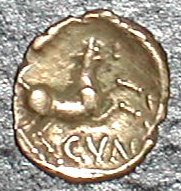 |
 |
kings skink: |
| Author | Message |
|
AGILIS Senior Member Joined: 27 Feb 2007 No. of posts: 694  View other posts by AGILIS |
Posted: 13 Feb 2009 here apic of a nice couple of skinks in  West Australia today picture of the python i caught to come West Australia today picture of the python i caught to come keith keith 
LOCAL ICYNICAL CELTIC ECO WARRIOR AND FAILED DRUID |
|
Peter Senior Member Joined: 17 Jan 2008 No. of posts: 260 View other posts by Peter |
Posted: 13 Feb 2009 Stunning animals Keith. I am looking forward to seeing the python pics. Some species of Morelia? 
|
|
AGILIS Senior Member Joined: 27 Feb 2007 No. of posts: 694  View other posts by AGILIS |
Posted: 23 Feb 2009 hi peter its Aussie classification is Egernia kingi they are all over the place in the City of Albany souwest West oz hi peter its Aussie classification is Egernia kingi they are all over the place in the City of Albany souwest West ozLOCAL ICYNICAL CELTIC ECO WARRIOR AND FAILED DRUID |
|
Guests Guest Joined: 25 Jan 2003 No. of posts: -78 View other posts by Guests |
Posted: 27 May 2009 A team of researchers from institutions in Germany, India, and Japan discovered this surprising result while observing the ant species Leptogenys processionalis travel down linear trails. Like many other ant species, these ants form trails with their pheromones that remain stable for hours or even days, making the trails analogous to vehicular highways. í?Our study clearly demonstrates that ant traffic is very different from vehicular traffic, in spite of superficial similarities,í? Andreas Schadschneider, of the University of K?ln and the University of Bonn in Germany, told PhysOrg.com. í?It also raises a fundamental question: how do the ants achieve practically í«free-flowí» up to such high densities; our experiment demonstrates what happens and we also make a theoretical model of what might be responsible for this behavior.í? Most significantly, the scientists found that, unlike vehicular traffic, the average velocity of ant traffic remains the same in spite of increasing density. Consequently, the greater the density, the greater the flux, so that more ants travel down the trail segment in a given amount of time. In contrast, vehicles on a highway tend to slow down when the traffic density increases, eventually resulting in a traffic jam. Along the same lines, the researchers noted that most types of high-density traffic exhibit mutual blocking, in which a vehicle is prevented from moving by neighboring vehicles and also contributes to the blocking of those vehicles. However, the researchers did not observe mutual blocking in the ant trails. wow gold As the researchers suggested, perhaps evolution has optimized ant traffic flow, since ants are known to have highly developed social behaviors. In their study, the scientists observed that ants tend to form platoons in which they move at almost identical velocities, allowing them to travel í?bumper-to-bumperí? while maintaining their velocity. At higher densities, platoons merge to form longer platoons. But because their head-distance remains the same, traffic still maintains its same velocity even as density increases. This behavior is very different from highway traffic, in which vehicles close together tend to slow down. |
- kings skink |